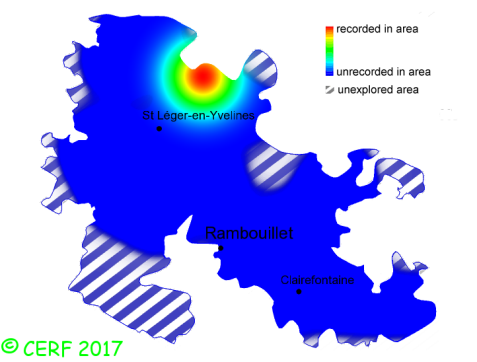|
Geastrum pectinatum Pers.
|
New classification: Basidiomycota/Agaricomycotina/Agaricomycetes/Phallomycetidae/Geastrales/Geastraceae
Former classification: Basidiomycota/Homobasidiomycetes/Gasteromycetideae/Lycoperdales/Gaestraceae
synonyms: Geastrum plicatum, Geastrum tenuipes
(unconfirmed synonyms: Geaster pectinatus)
edibility : inedible
|
|
|
The fruiting body is star-shaped with 6-12 brown pointed rays, with earth stuck underneath, covered with a layer cracking and flaking off, and at its centre, a spore sac placed on top of a long (5-6 mm) and slender stalk, with cream to tawny rays, the spore sac being lead grey, with a rather short stem.
The fertile surface is internal: the spores are released as dust when mature.
The spore print is dark brown.
It grows on the ground, in coniferous woods, on sandy soils.
The fruiting period takes place from September to December.
| Dimensions: |
width of fruiting body approximately 6 cm (between 3 and 11 cm) |
| | total height approximately 2 cm (between 1 and 3 cm) |
Distinctive features : sorry, no English description yet
Geastrum pectinatum is rare and confined in the forest of Rambouillet, and is quite rare, more generally speaking
.
|  | | Above : distribution map of Geastrum pectinatum in the forest of Rambouillet |
|
page updated on 14/01/18
